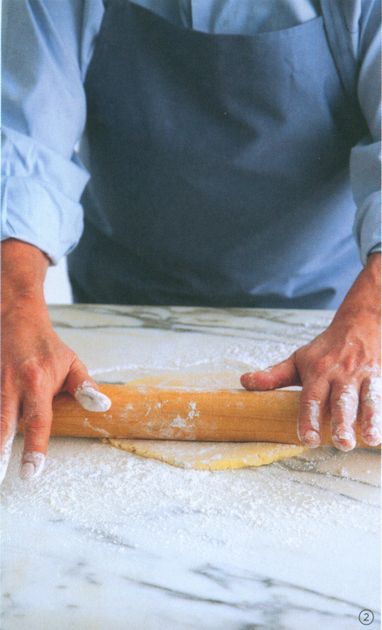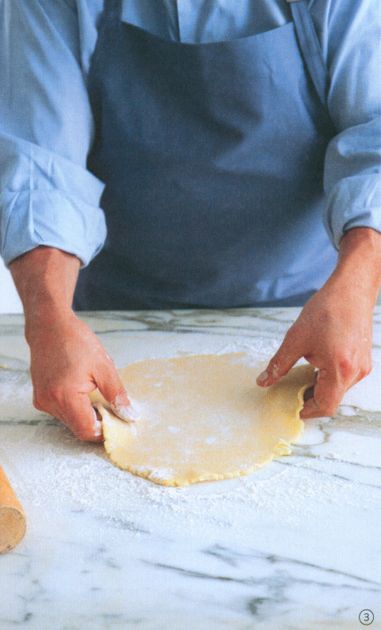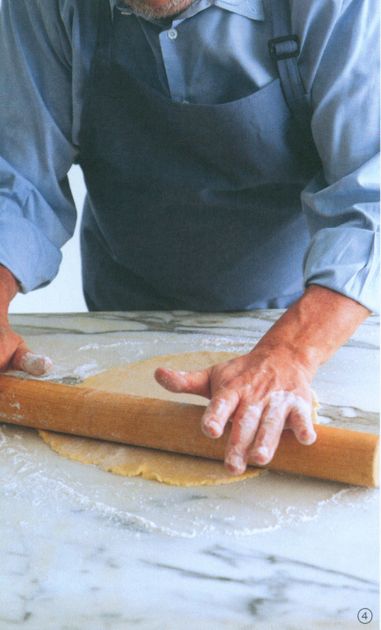Advertisement
Rolling Simple Pastry Doughs
Appears in
Published 2014
Rolling dough is easy; millions - probably billions - of people can do it, and so can you. Over the years, I’ve developed some specific methods for teaching people how to do it successfully and they are listed here.
- Always start with chilled dough; the only exception is dough that’s made with oil.
- Flaky doughs and cookie doughs need to soften briefly at room temperature before being rolled, but be careful not to wait too long if the room is warm.
- Sweet doughs have to be floured and kneaded briefly until malleable.
- Before rolling any dough, ease it into the shape needed for the tin. For a round tin, form it into a rough disk shape
; for a square or rectangular tin, form it into a square. Only press in on the sides of your piece of dough; don’t fold it over on itself or roll it into a ball. The only exception is the sweet dough. - Once you have the shape you need, flour the work surface with pinches of flour and place the dough on it, then flour the top of the dough. Using pinches of flour means that you are much less likely to add too much flour while you’re rolling. Never use handfuls of flour on the surface or the dough.
- Before beginning to roll, flatten your piece of dough by pressing it with the rolling pin in a series of lines parallel to the edge of the work surface. Turn a round piece of dough 30° or a square piece 90° and repeat. You’ll see that the dough starts getting slightly softer and thinner but keeps the shape you’ve eased it into. Remember to renew the pinches of flour under and on top of the dough even as you’re pressing it out.
- When you roll, imagine that the dough is the face of a clock and roll from 6 o’clock to 12 o’clock and back again, stopping short of rolling over the edges in both directions
. - Turn a round piece of dough 30° or a square 90°
and repeat , remembering to flour the surface and the dough. - Repeat steps 7 and 8 until the dough is the correct size for your tin. Have your tin nearby so that you can compare the size of the dough to it. For a tart tin, the diameter of the dough should be the diameter of the tin plus twice its depth plus 2.5cm. For a pie dish, the size should be 7.5cm wider than the top of the tin.






